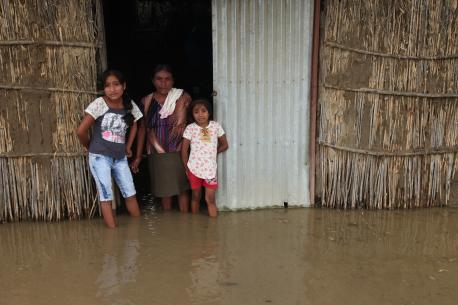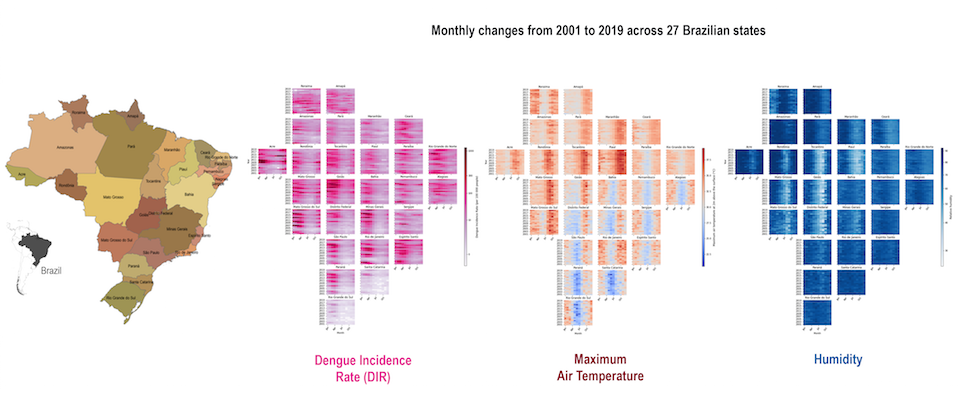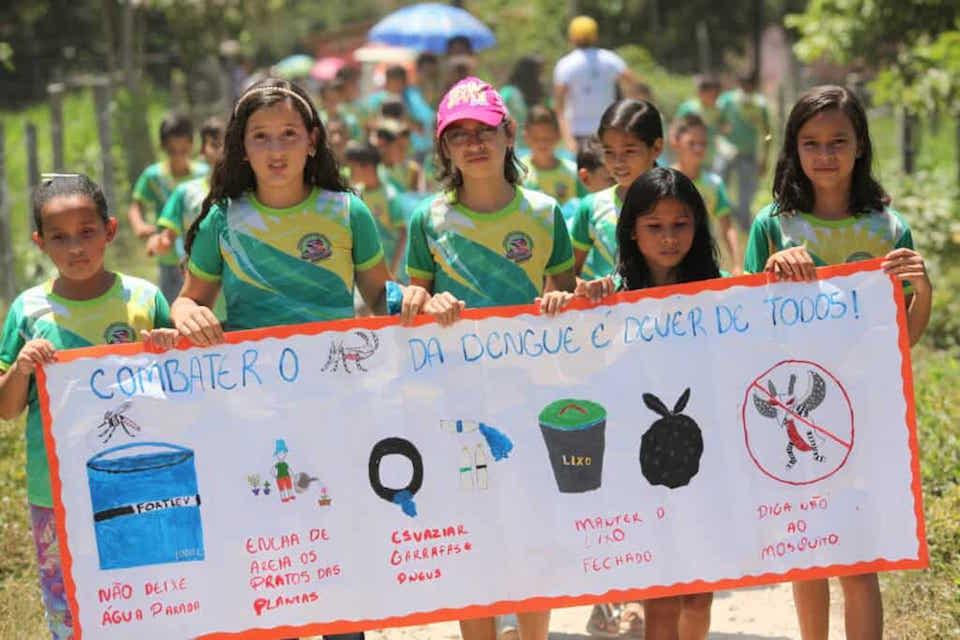
Using Artificial Intelligence to Fight Dengue
As the climate changes, mosquito-borne diseases are on the rise. Members of UNICEF's Innovation and Climate teams are working with partners to create AI models that can predict and prevent future outbreaks.
Rising shorelines. Arid landscapes and withering crops. Devastating extreme weather. This is some of the imagery that likely comes to mind when one thinks about global warming and climate change. But there are other, less visible effects — including the increased risk of neglected tropical disease outbreaks — which also pose profound threats.
These viral, parasitic, bacterial and fungal diseases primarily affect the world's most impoverished communities. Some, like dengue, are spreading rapidly; in 2019, the world saw the largest number of dengue cases ever reported. The disease is now endemic in more than 100 countries. Its most acute form, dengue hemorrhagic fever, can cause heavy bleeding and even death if left untreated. Globally, children are disproportionately affected by these severe cases.
Dengue — an acute, infectious disease characterized by headache, severe joint pain and a rash — is transmitted to humans by infected Aedes aegypti mosquitoes. Climate change brings warmer temperatures and changing rainfall patterns, creating more favorable conditions for these disease carriers. It was with this in mind that team members from UNICEF’s Offices of Innovation and Climate set out to create a predictive artificial intelligence model that could be used to connect the dots and forecast where and when future outbreaks of dengue would occur.
Being able to give communities advance warning would be a game changer.
Building an AI ensemble learning machine was a team effort between UNICEF country offices, governments and partners like the European Space Agency
The first attempts to create a climate-based AI model took place in Peru’s Ucayali region, located within the Amazon rainforest. Around 2018, Do-Hyung Kim, a Data Science Lead at UNICEF's Giga Initiative, and Hanoch Barlevi, a UNICEF Climate, Environment and Disaster Risk Specialist, were looking for ways that the organization could contribute to climate adaptation efforts from a children’s health perspective.
They partnered with the European Space Agency (ESA) to assemble extensive climate data, but Peru's diverse geography and limited health records made it challenging to create a predictive model for dengue outbreaks. “Basically, we were lacking evidence,” says Barlevi. “There was no coherent, consistent and systematic way of understanding what was in the past, what is the situation now, and how we could project this so the health system could be better prepared in order to prevent an increase of cases."
The team found new hope for the project in Brazil. Not only were public health records richer and more complete there, but they also had access to abundant socioeconomic data. “This is great because that is exactly when we're looking at: vulnerability, disparity, leaving no one behind,” says Barlevi.

Using meteorological tracking data from ESA's Copernicus program, they created a full AI ensemble machine learning model. Their ESA partners "told us that we're giving them an opportunity to strengthen the value of satellites and climate model data to society,” says Barlevi. “They have all the technology. They have satellites orbiting in the sky. But building this project has really given them the opportunity to address new end-users with different targets and objectives.” Once the tool proved to be accurate, the team was able to go back to Peru and achieve similarly compelling results.
The result is a potentially lifesaving tool that can accurately predict forecast dengue epidemics. “Currently, the model predicts a future trend two to three weeks in advance,” says Kim. ”Maybe we can even add more data to extend that to a month.”
UNICEF’s new global lead on malaria and NTDs, Alexandre Boon, is excited by the possibilities this learning machine presents. He recently started collaborating with the team and believes a similar approach could be applied to others NTDs, as well as malaria. Because the latter is also a mosquito-borne illness, there are common variables to dengue that could be used.
“You could then take public health preventative measures, if this tool ever gave you an alert,” Boon says. “With malaria, for example, you can give a seasonal chemoprophylaxis that helps, within a month, reduce the vulnerability of populations. You could increase indoor residual spraying and treated net distribution, or clean up the water places where you’ve got mosquito larvae.”

Phase 2: scaling the model for use worldwide
Now that the ensemble machine learning model has been piloted in two countries, the question is where to go next. “The idea is to indeed try to see whether or not this tool could be used for the same disease, but in other settings,” says Boon. “And then, in other settings with other diseases, and then we can mature the model.”
This will take time. “We are planning to make it more scalable,” says Kim. “It's actually not really easy to gather the same kind of dengue case data from other country offices, but we could hopefully transfer the learnings that we have made from Brazil and Peru.”
Collaboration will remain key as well, as the team hopes to engage with governments so that they can see the value of this technology. They're also in touch with numerous partners to add new features to the model and analyze additional climate factors. “Our big test is how we’ll manage to operationalize all this work and make public health systems more prepared. And that's what we really want to see,” says Barlevi.
By using predictive AI to better understand the past, we can more effectively face the climate crises children and families will face in the future.
UNICEF works in more than 190 countries and territories to save children's lives and help them reach their full potential. Your contribution can make a difference. Please donate.
HOW TO HELP
There are many ways to make a difference
War, famine, poverty, natural disasters — threats to the world's children keep coming. But UNICEF won't stop working to keep children healthy and safe.
UNICEF works in over 190 countries and territories — more places than any other children's organization. UNICEF has the world's largest humanitarian warehouse and, when disaster strikes, can get supplies almost anywhere within 72 hours. Constantly innovating, always advocating for a better world for children, UNICEF works to ensure that every child can grow up healthy, educated, protected and respected.
Would you like to help give all children the opportunity to reach their full potential? There are many ways to get involved.





